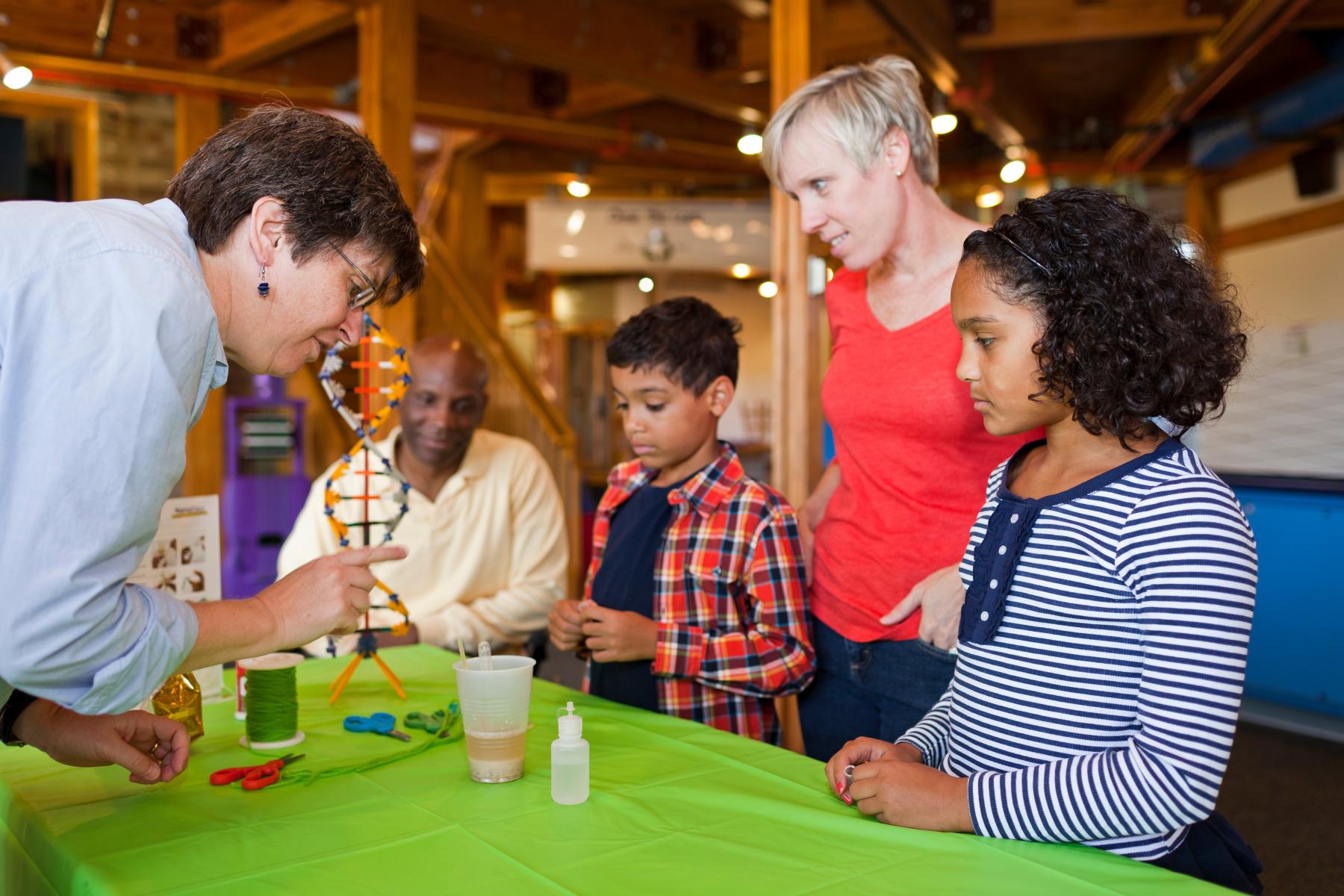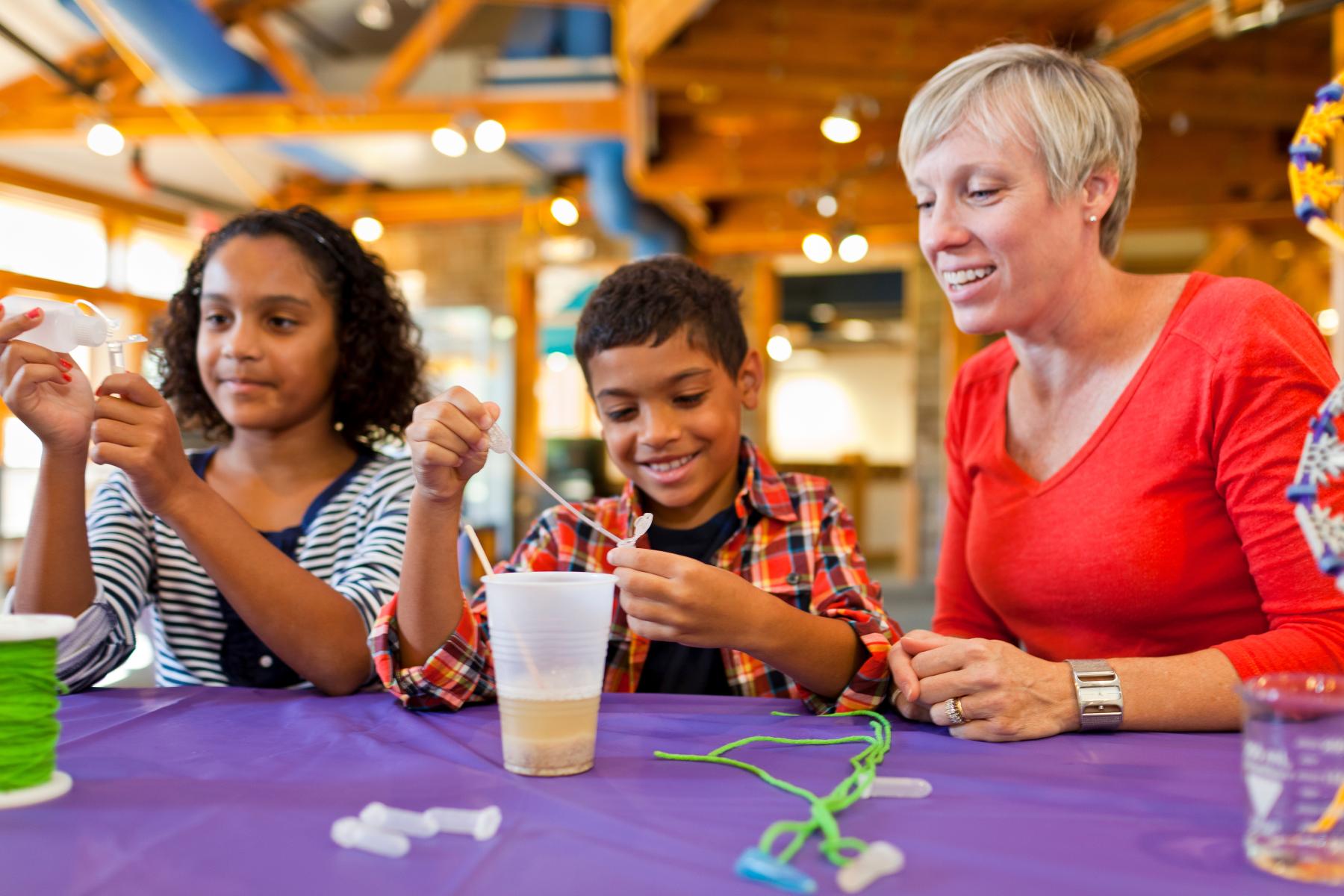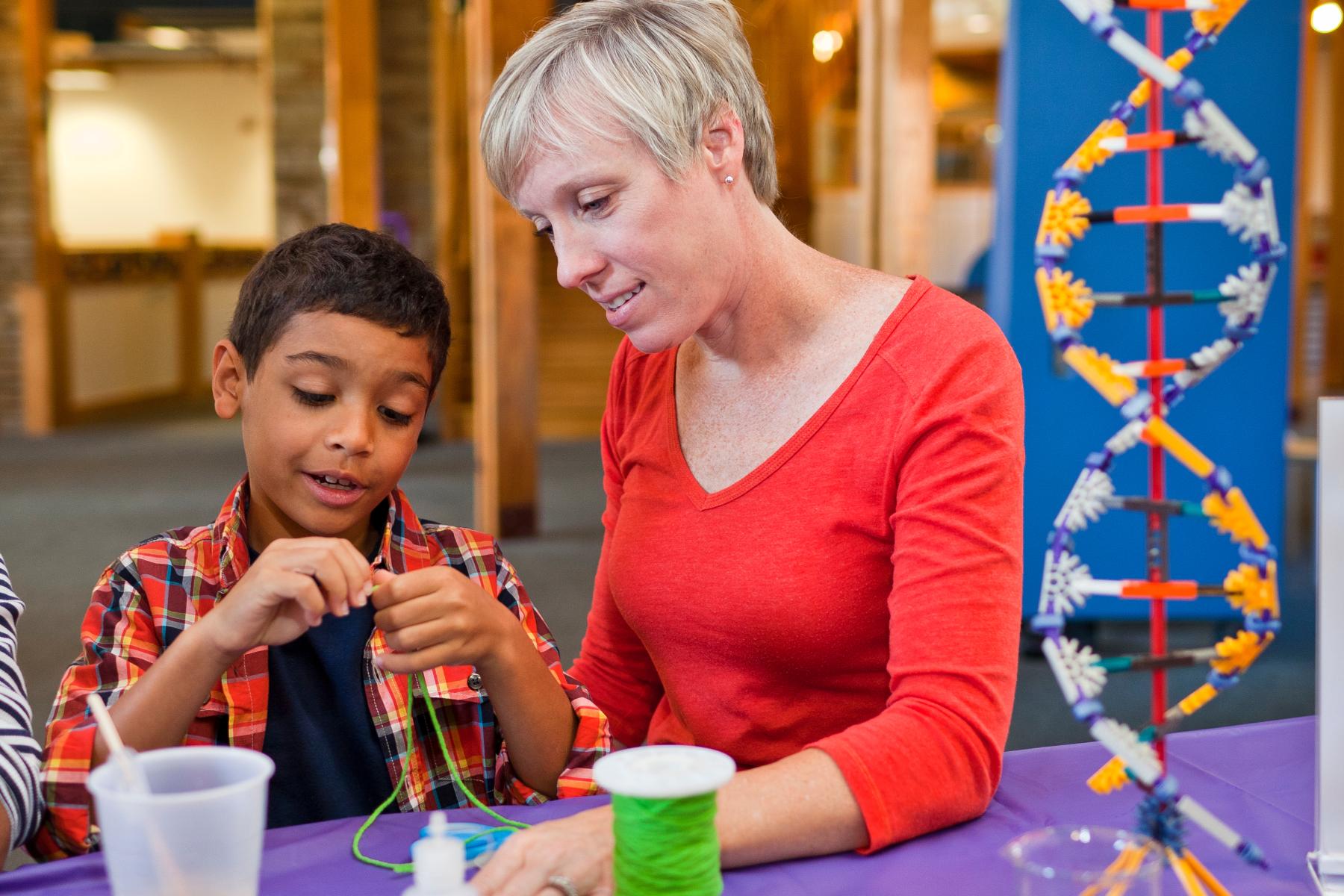DESCRIPTION
"DNA Nanotechnology" is a facilitated, hands-on activity exploring deoxyribonucleic acid, a nanoscale structure that occurs in nature. Visitors extract a sample of DNA from split peas and put it in an Eppendorf tube to take home. They learn that nanoscientists study DNA to understand its biological function, and that they also use it to make other nanoscale materials and devices.
DESCRIPTION
"DNA Nanotechnology" is a facilitated, hands-on activity exploring deoxyribonucleic acid, a nanoscale structure that occurs in nature. Visitors extract a sample of DNA from split peas and put it in an Eppendorf tube to take home. They learn that nanoscientists study DNA to understand its biological function, and that they also use it to make other nanoscale materials and devices.
OBJECTIVES
BIG IDEA
Researchers in the field of nanotechnology use DNA, a nanoscale structure present in the cells of every living thing, to make tiny shapes and patterns.
LEARNING GOALS
DNA is in the cells of every living thing.
DNA helps cells to grow and do their jobs.
DNA is a nanoscale material: it’s only 2 nanometers across.
Nano is very, very small.
Nanoscientists learn about and make things that are too small to see.
Researchers are studying DNA in order to understand its biological function. They are applying that knowledge in fields such as medicine.
Researchers in the field of nanotechnology are also exploring how DNA can be used as a raw material to create new materials and technologies.
Nanoscale effects occur in many places. Some are natural, everyday occurrences; others are the result of cutting-edge research.
Nanotechnology means working at small size scales, manipulating materials to exhibit new properties.
NANO CONTENT MAP
Nanometer-sized things are very small, and often behave differently than larger things do.
Scientists and engineers have formed the interdisciplinary field of nanotechnology by investigating properties and manipulating matter at the nanoscale.
Nanoscience, nanotechnology, and nanoengineering lead to new knowledge and innovations that weren't possible before.
Credits
Sciencenter
Developed for the NISE Network with funding from the National Science Foundation under Award Numbers 0532536 and 0940143. Any opinions, findings, and conclusions or recommendations expressed in this product are those of the authors and do not necessarily reflect the views of the Foundation.
Creative Commons Attribution Non-Commercial Share Alike 3.0 United States (CC BY-NC-SA 3.0 US).
View more details

NISE Network products are developed through an iterative collaborative process that includes scientific review, peer review, and visitor evaluation in accordance with an inclusive audiences approach. Products are designed to be easily edited and adapted for different audiences under a Creative Commons Attribution Non-Commercial Share Alike license. To learn more, visit our Development Process page.





